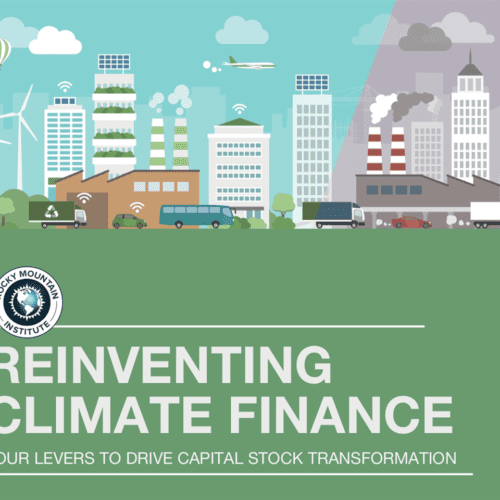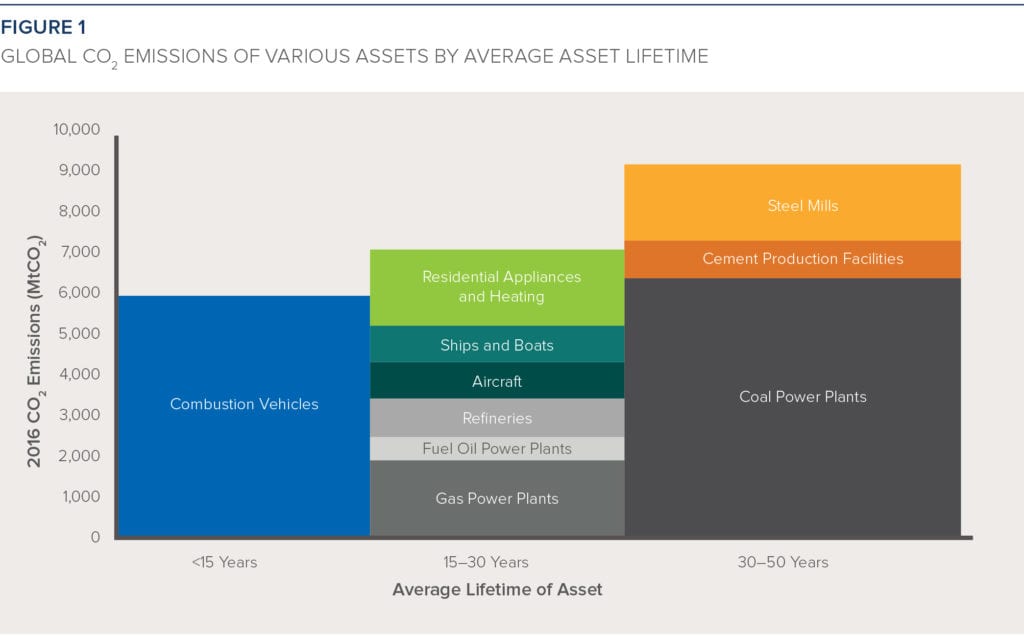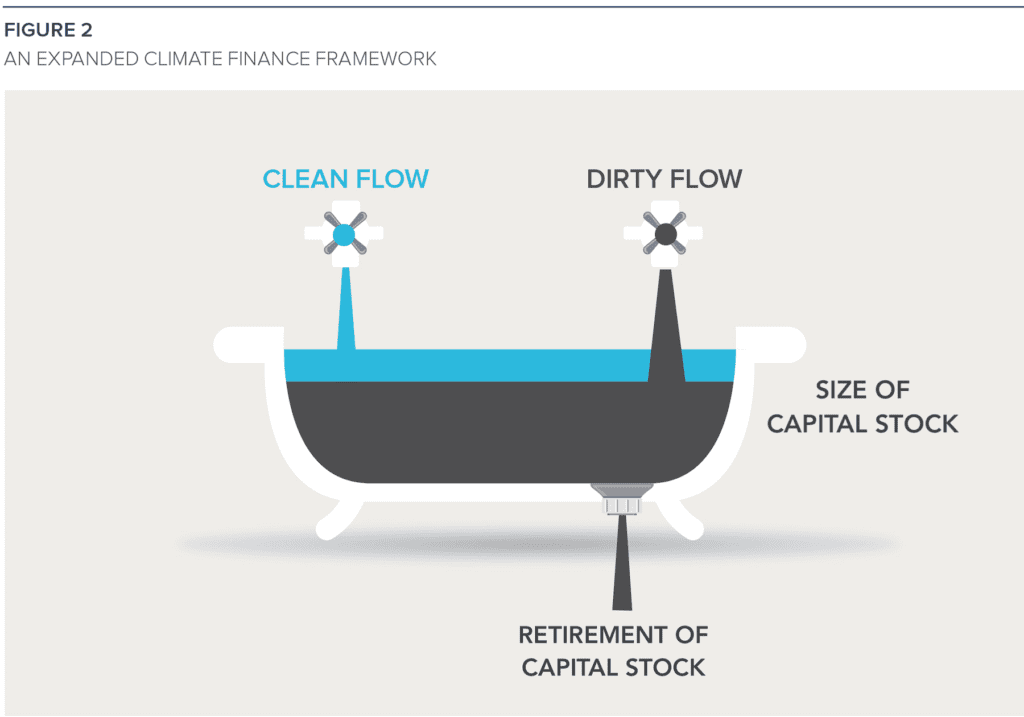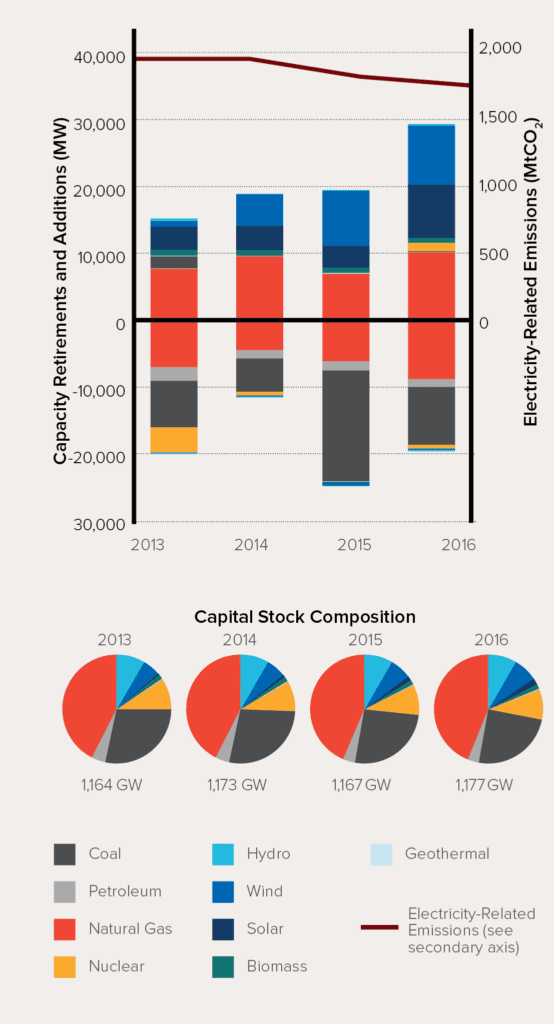Four Levers to Drive Capital Stock Transformation

Report | 2018
Reinventing Climate Finance
Four Levers to Drive Capital Stock Transformation
Finance has long been a key variable in the success or failure of global efforts to tackle climate change. However, to date, climate finance has been narrowly framed in terms of volumes of “clean” and “dirty” finance flows, resulting in an incomplete framework for achieving long-term climate goals.
Just as annual greenhouse gas (GHG) emissions drive marginal changes to atmospheric GHG concentrations, annual finance flows only contribute marginally to the composition of the global economy’s capital stock—the long-lived physical assets such as vehicles, power plants, and manufacturing facilities that collectively emit 78 percent of total GHG emissions. A more comprehensive framework therefore repositions climate finance to drive capital stock transformation.
To use an analogy, think of the global economy as a bathtub. At present, the global “bathtub” is largely filled with “dirty” water—capital stock comprised of CO2-intensive assets such as fossil-fueled power plants, inefficient buildings, and internal combustion engine vehicles. Avoiding the most dangerous impacts of climate change will require a complete transformation of what fills this bathtub from dirty to clean water by 2050.
Policymakers, negotiators, and investors have primarily focused on adjusting the two faucets flowing into the bathtub: reducing the flow of dirty water pouring into the tub by slowing investments in new fossil fuel generation or phasing out fossil fuel subsidies; and increasing the flow of clean water. In addition to these two levers, we propose two additional levers that are necessary for achieving climate objectives.
First, decarbonizing global capital stocks will require significantly increasing the rate at which dirty water drains out of the bathtub, including through the early retirement of coal plants and combustion vehicles. Second, improving the efficiency of existing capital stock presents an opportunity to meet climate goals by reducing the size of the bathtub itself, for example, a more effective utilization of demand-side resources can help reduce requirements for new power capacity.
We believe that a climate finance framework that incorporates these metrics—Paris-aligned flows, flows that undermine climate objectives, the rate of capital stock turnover, and the quantity of capital stock needed—will inform a more comprehensive and effective set of interventions for decision makers in achieving global climate objectives.
This graph depicts the “stocks and flows” framework presented in this paper, providing an integrated way of viewing and tracking capital stock transformation over time by accounting for all four levers, including: (1) clean flows (renewable energy capacity additions), (2) dirty flows (fossil fuel capacity additions), (3) the rate of retirement of high-carbon assets (fossil fuel capacity retirements), and (4) the quantity of assets needed (gigawatts installed).
A framework focused on driving capital stock transformation could be implemented within the public sector at multilateral and national levels, as well as through the private sector through innovative financial mechanisms. Operationalizing this framework will require additional methodological refinements, and presents various implications for national policy makers, as well as the private sector.




